7 Tested Ways To Prevent Dolby Atmos From Turning Off Unexpectedly

- For smartphone users, Dolby Atmos may turn off due to improper headphone connections or conflicts with certain apps; ensuring a stable connection or uninstalling conflicting apps can help.
- On Windows laptops or PCs, settings like Mono Audio or “Allow Applications to Take Exclusive Control of This Device” can interfere with Dolby Atmos, and adjusting them might resolve the issue.
- Enabling specific modes like Dolby Atmos for gaming on Android phones or changing default spatial sound settings in the Windows Registry are proven solutions to prevent Dolby Atmos from shutting off.
In this article, I will share with you seven proven solutions to quickly fix the issue of Dolby Atmos turning off on your phones or Windows laptops and PCs.
Let’s get started!
For Android Phones or iPhones
Try the following solutions if you’re encountering this problem while using Dolby Atmos on an Android or iOS smartphone.
1. Check the Connection of the Headphones (Wired/Wireless)
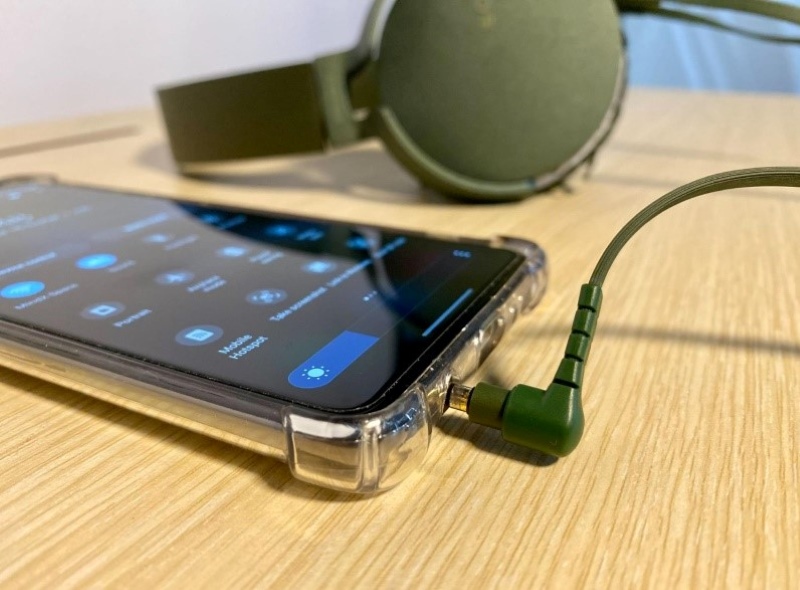
Certain smartphone models only support Dolby Atmos when connected to headphones, be they wired or wireless (Bluetooth). Otherwise, your phone’s Dolby Atmos settings will be greyed out and you will be unable to adjust them.
To further understand why this is, check out our detailed article Why Is Dolby Atmos Greyed Out?
Everyone has had the experience of their old wired headphones cutting out, especially when the wire is damaged. This can cause your phone’s Dolby Atmos feature to suddenly turn on and off as the headphone cable is too loose or broken to stay in place.
So, if you’re using wired headphones, ensure its cable is in good condition, and not worn or torn. You may want to try using another pair of headphones to see if they prompt better results.
If you’re using Bluetooth headphones, make sure that they’re connected to the right device and that there aren’t any other Bluetooth devices nearby interrupting your connection.
2. Try Turning On the Dolby Atmos for Gaming Mode
A few Android users have reported that their phone’s Dolby Atmos feature suddenly disables whenever they open apps, like Instagram and Facebook.
After some trial and error, these users found that enabling Dolby Atmos for gaming fixed this problem.
So, if your Android phone’s Dolby Atmos turns off every time you go to update your Facebook status, then it’s a good idea to enable Dolby Atmos for gaming mode.
Unlike iPhones, Android phones’ settings aren’t standardized and may vary depending on their brand and model. To help you get started, I’ve demonstrated how to complete this process on my Samsung phone.
You can either follow the steps listed below or search for instructions on how to enable this mode for your specific model.
Note: If you can’t find Dolby Atmos for Gaming in your phone’s settings, then it is not supported by your model.
Follow the instructions below to enable Dolby Atmos for gaming on your Android phone.
Step 1: Head to your phone’s Settings app.
Step 2: Go to Sounds and vibration.

Step 3: Navigate to Sound quality and effects.

Step 4: Enable Dolby Atmos for gaming.
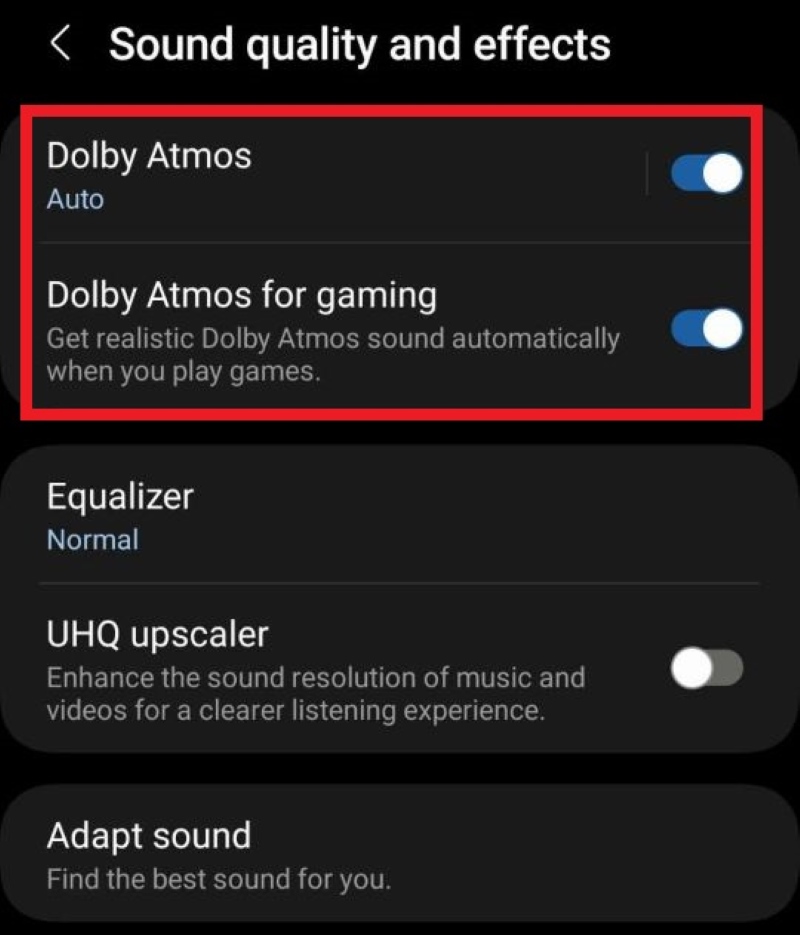
3. Uninstall the Conflicting App
Several users have found that opening certain apps, like Viper, prompts Dolby Atmos to disable due to a conflict.
Should you notice that a specific app seems to conflict with your phone’s Dolby Atmos function, try to avoid launching the app when using the feature.
Otherwise, you can ensure Dolby Atmos stays enabled all the time by simply uninstalling the conflicting app from your phone.
4. Clear the Cache of the Games Launcher
If your phone’s Dolby Atmos for gaming feature turns off each time you try to play games, you’re not alone. This Samsung phone user experienced the same issue which can be easily resolved by clearing the game launcher’s cache.
Follow the instructions below to clear the game launcher’s cache.
Step 1: Open the Settings.
Step 2: Head to Apps.
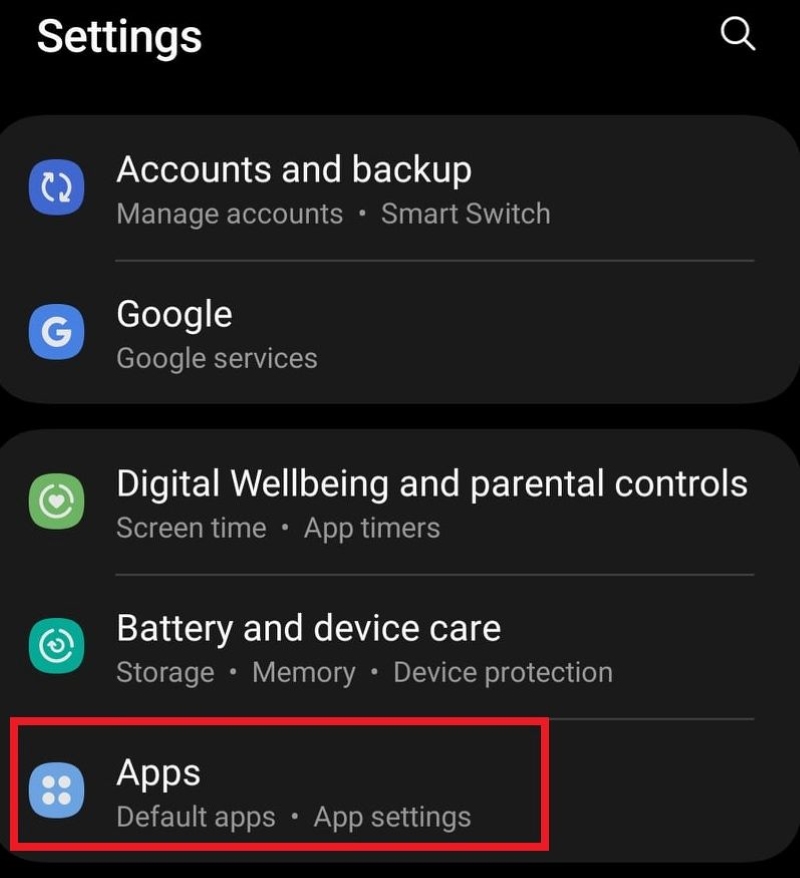
Step 3: Find and tap Game Launcher.

Step 4: Go to Storage.
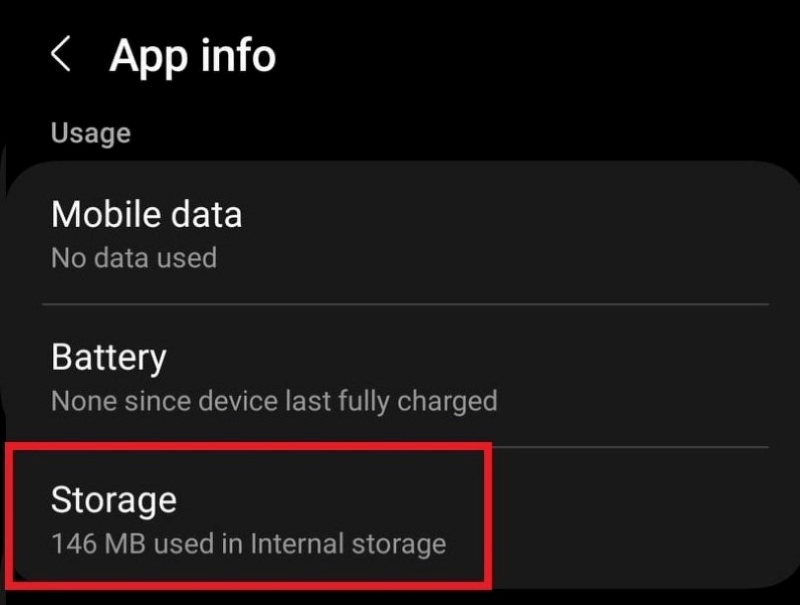
Step 5: Select Clear cache.
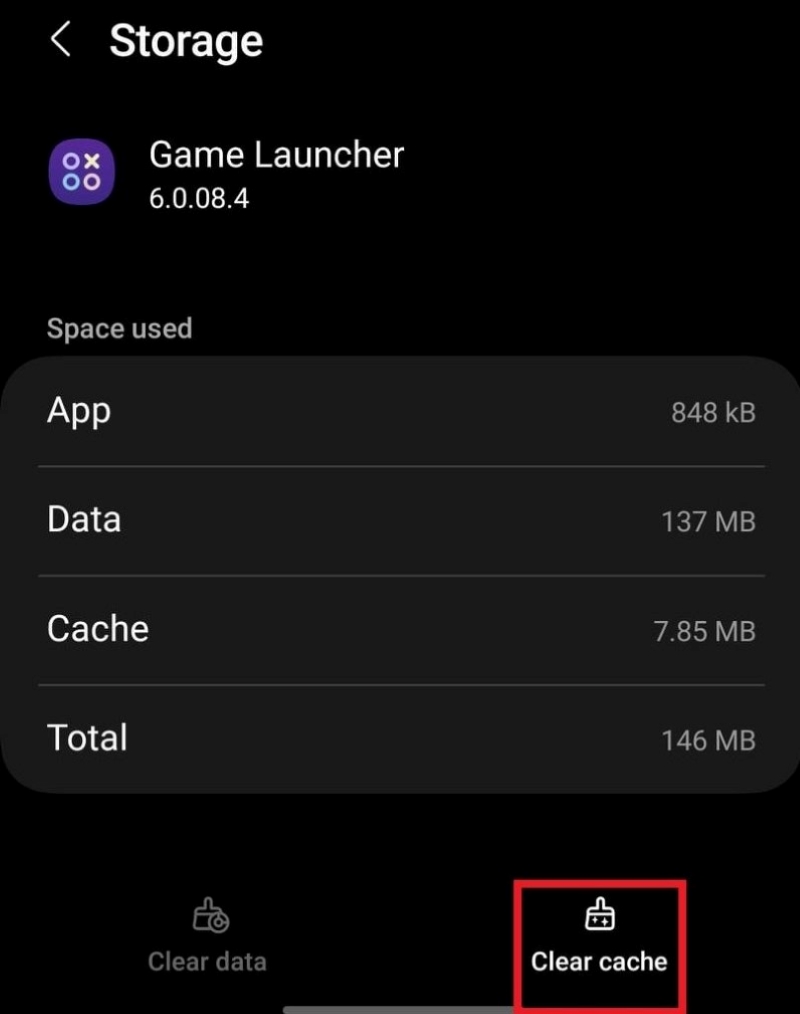
Now, all you have to do to enjoy playing games with Dolby Atmos is to re-open the Game Launcher.
5. Enable “Always On” for Dolby Atmos (iPhone)
A few iPhone users’ Dolby Atmos feature suddenly disabled when using the Apple Music app.
You can fix this glitch by enabling Always On for Dolby Atmos which ensures the feature stays on regardless of which tunes you’re jamming out to.
Follow the steps below to enable Always On for Dolby Atmos on your iPhone.
Note: You must have an Apple Music subscription to see the Dolby Atmos option within the Music tab.
Step 1: Open the Settings app and head to the Music tab.
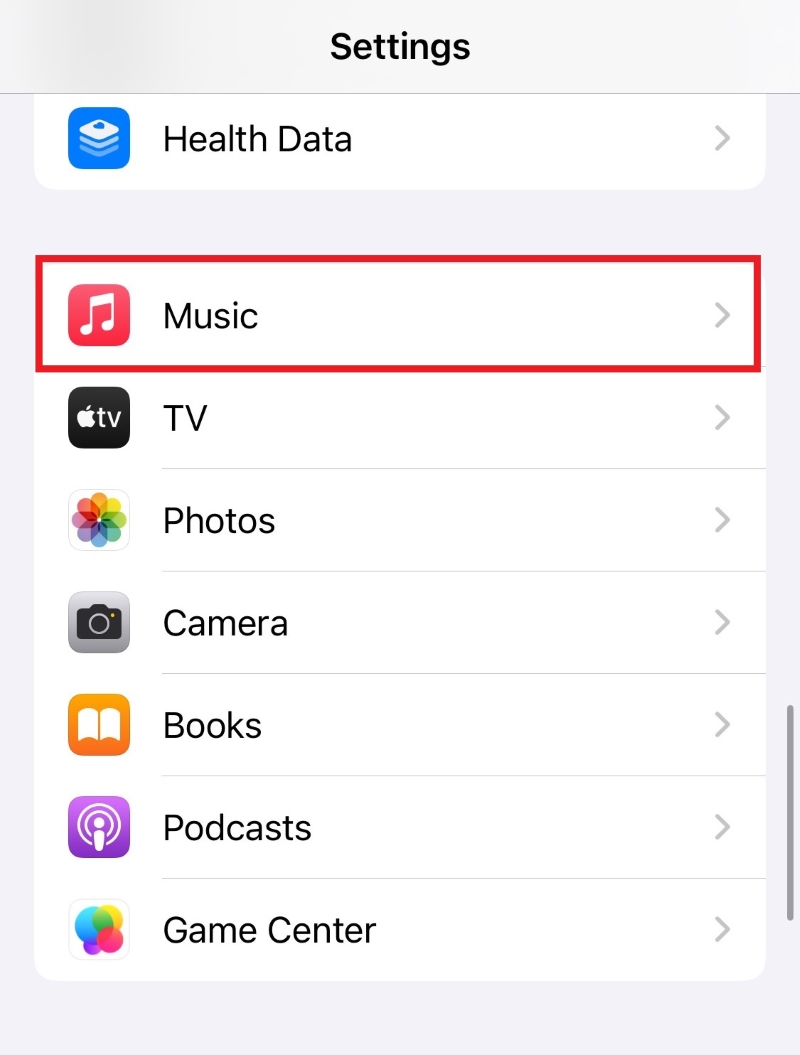
Step 2: Under Audio, go to Dolby Atmos.

Step 3: Head to Always On.
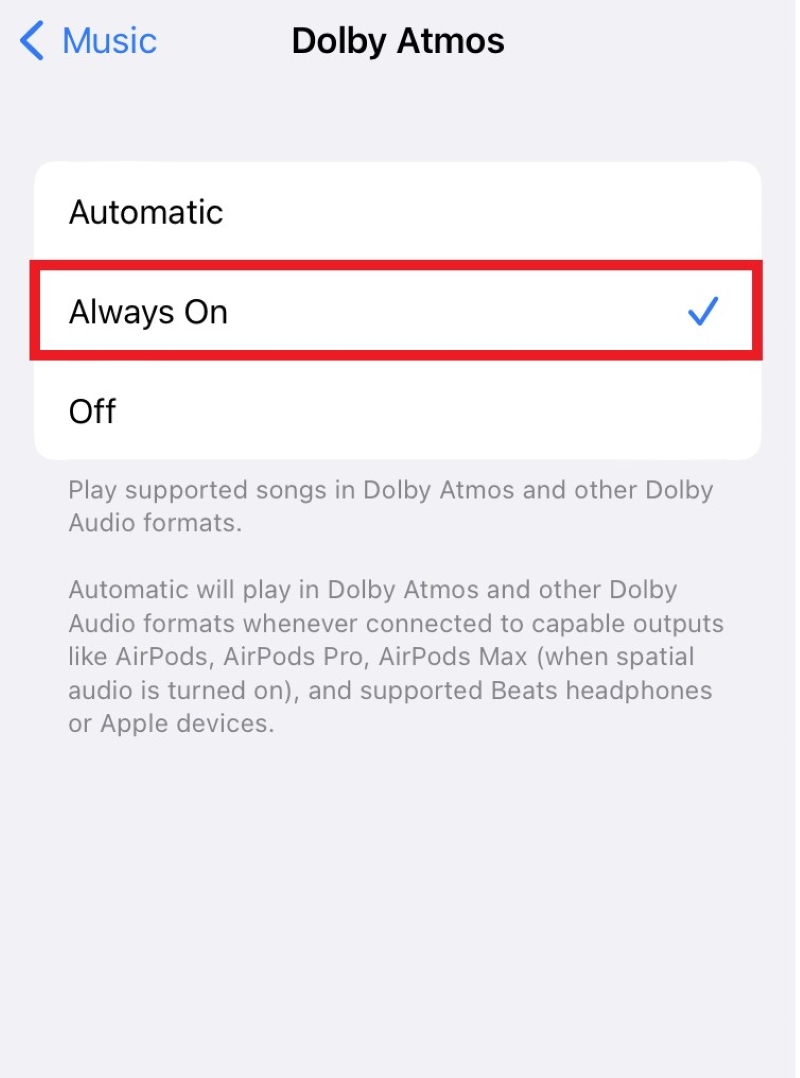
Step 4: Tap Turn On when the pop-up below appears on-screen.
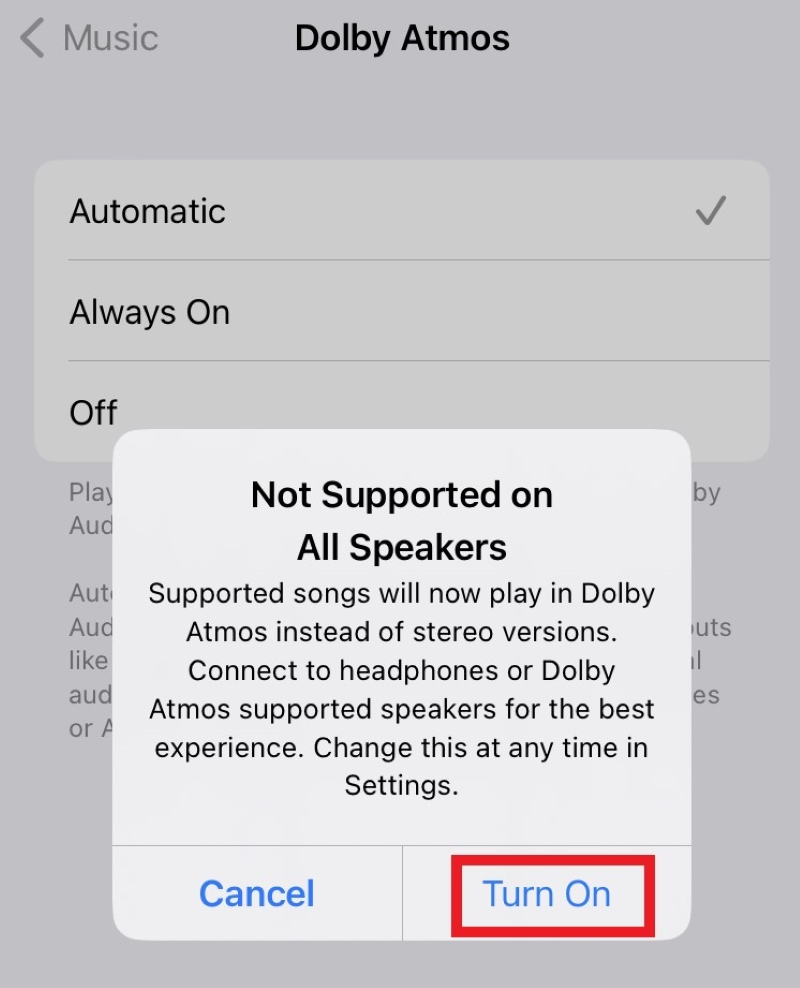
For Windows Laptops or PCs
If the Dolby Atmos or Spatial Sound feature on your Windows laptop or PC is continuously turning off, try the solutions below.
1. Turn Off the Mono Audio
Your laptop or PC’s Mono audio feature may be affecting the Dolby Atmos function, as these users found. This audio setting can conflict with Spatial Sound and cause it to randomly turn off.
So, it’s a good idea to disable it by following the steps below.
Step 1: Click the taskbar’s Search icon.
![]()
Step 2: Search for “Ease of access audio settings” and select it once it appears in the results.
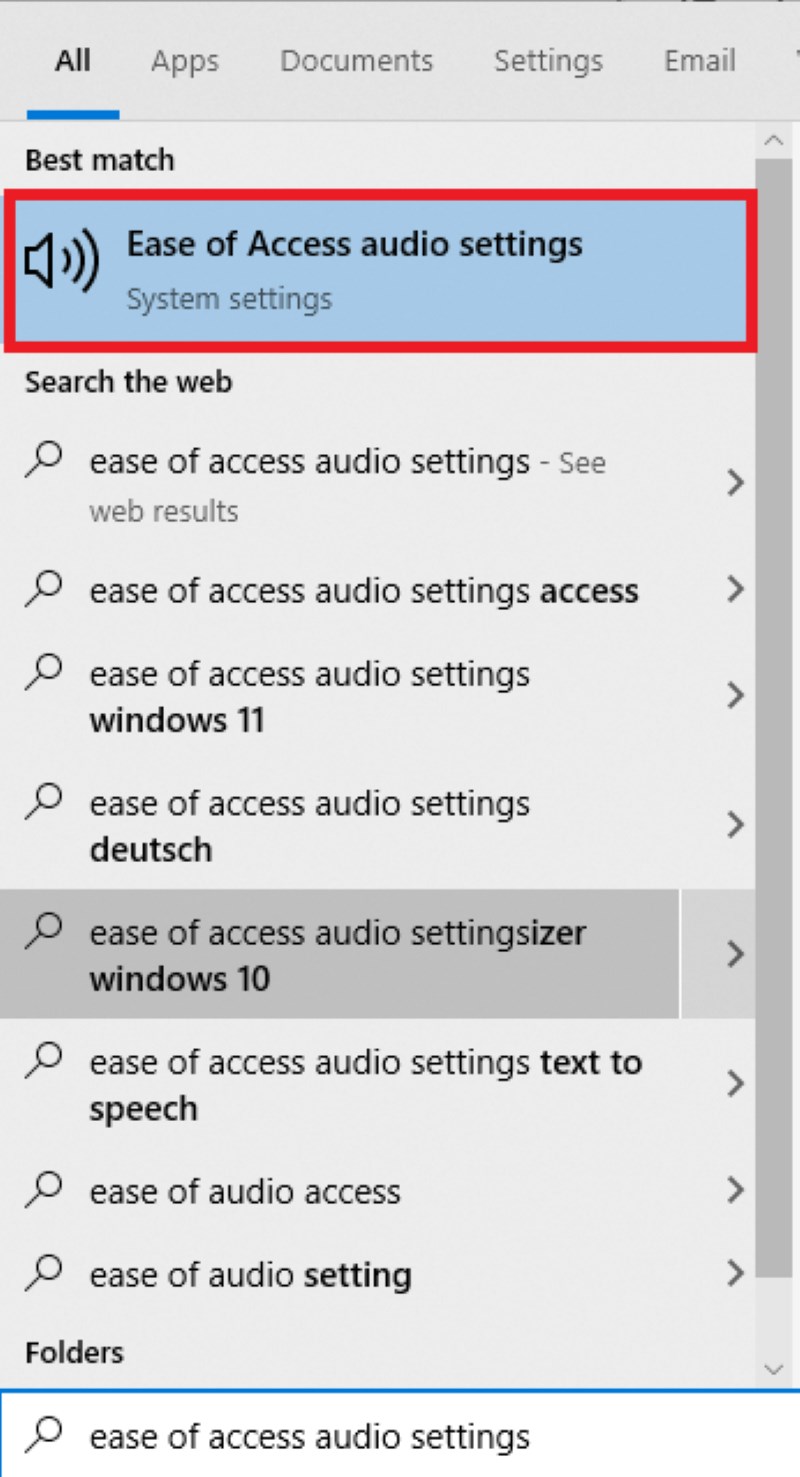
Step 3: Toggle Turn on mono audio to Off.
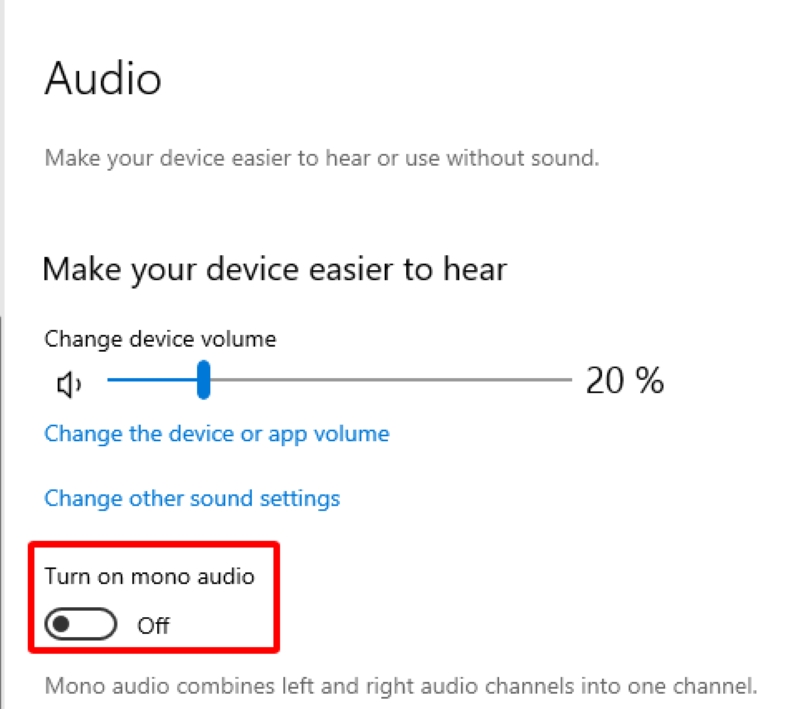
2. Turn Off the “Allow Applications to Take Exclusive Control of This Device” in Sound Settings
Follow the steps below to adjust your laptop or PC’s Sound settings.
Step 1: In the taskbar, right-click the Speaker icon.
![]()
Step 2: Go to Sounds.
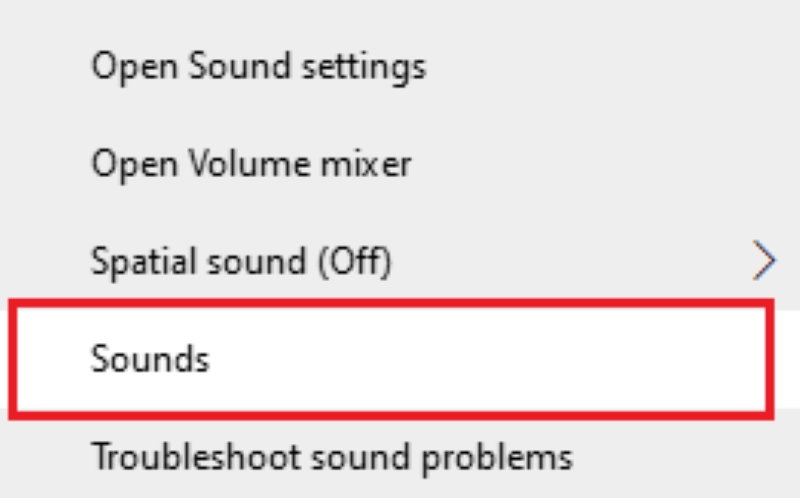
Step 3: Click on your current output speaker marked by a green check mark.
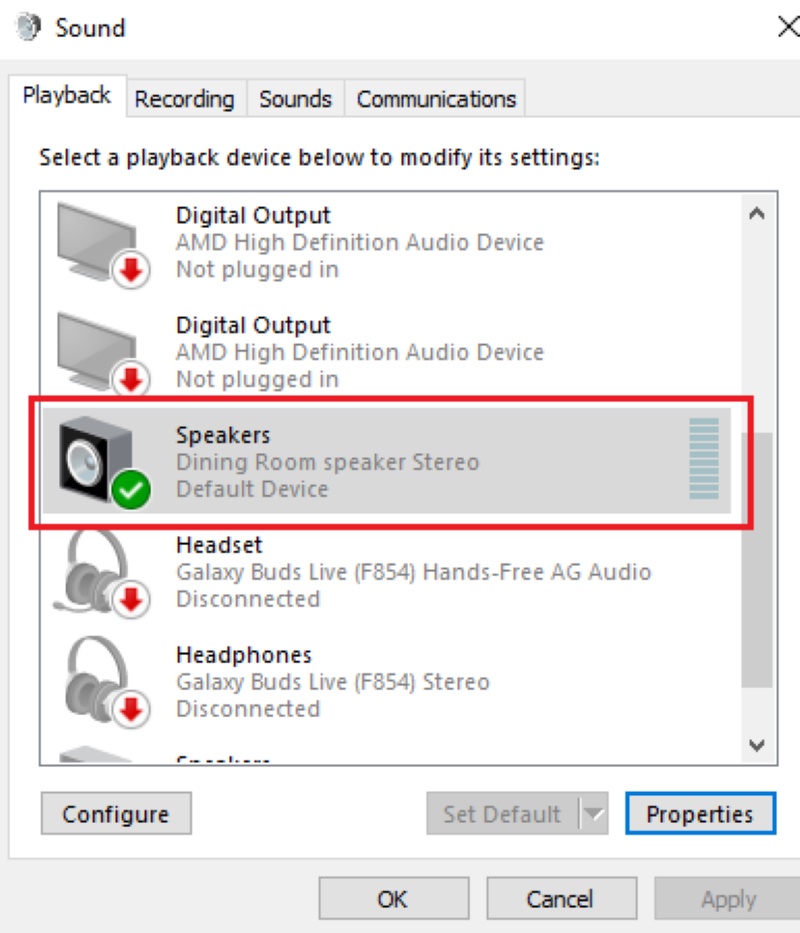
Step 4: Go to the Advanced tab.
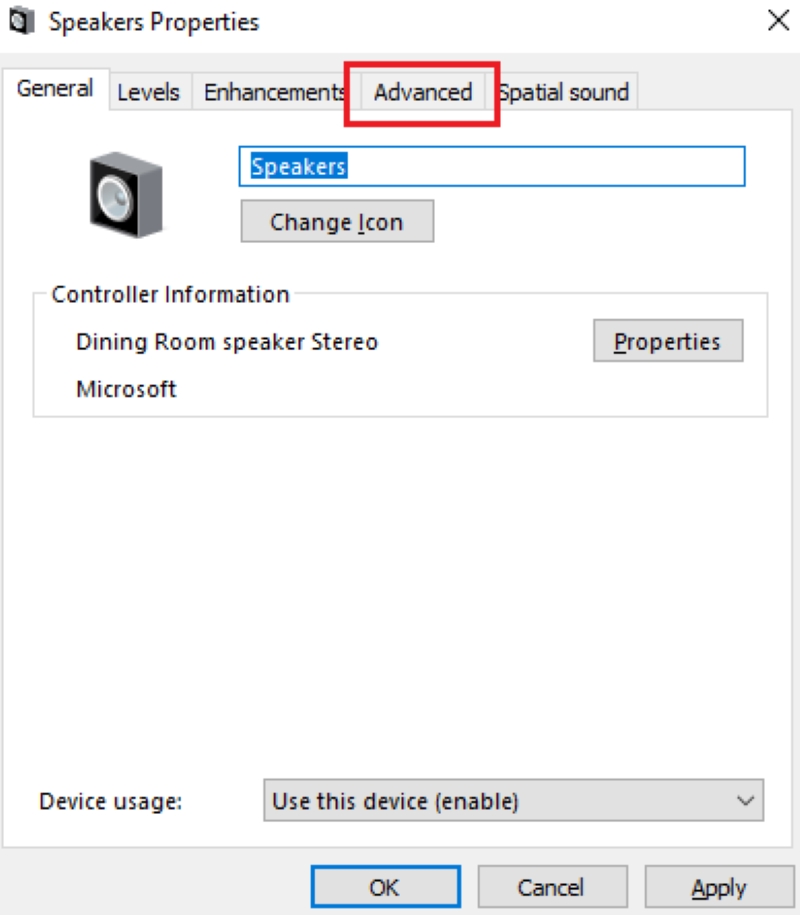
Step 5: Uncheck the box beside Allow applications to take exclusive control of this device. Then, click Apply to save your changes.
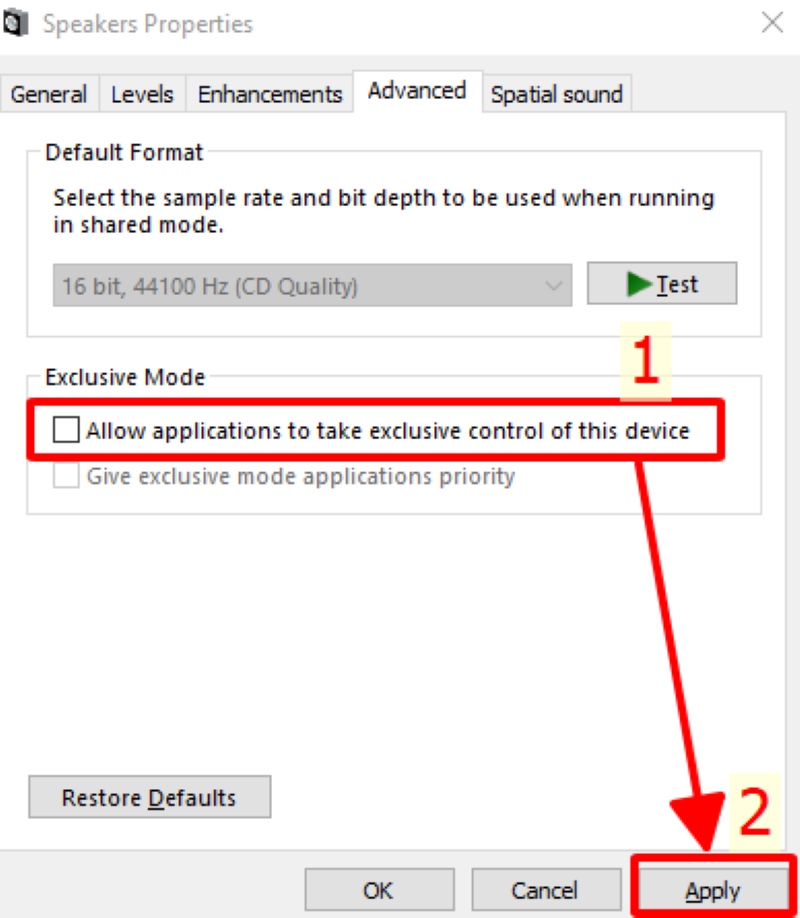
3. Change Default Spatial Sound in Windows Registry
Adjusting the default Spacial Sound in your laptop or PC’s Windows registry can help ensure Spatial Sound stays on, as this Reddit thread found.
Note: Before you adjust the Windows Registry, ensure to create a System Restore point to avoid any glitches by following these instructions.
Follow the steps below to change your device’s default Spatial Sound in its Windows Registry.
Step 1: Simultaneously press your keyboard’s Windows and R keys to launch the Run tool.

Step 2: Type “RegEdit” into the text box before clicking OK.
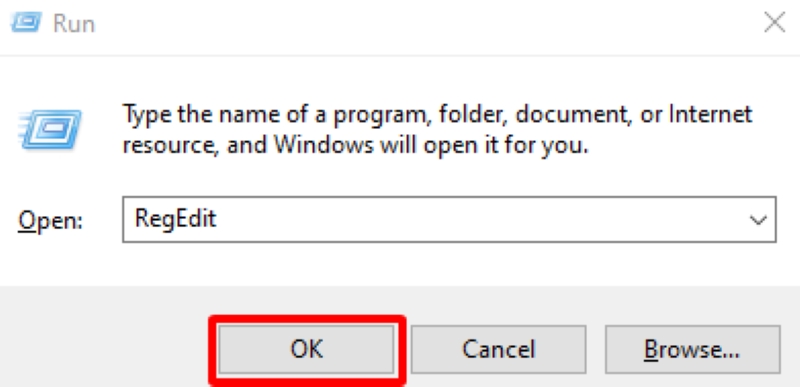
Step 3: Go to HKEY_CLASSES_ROOT.
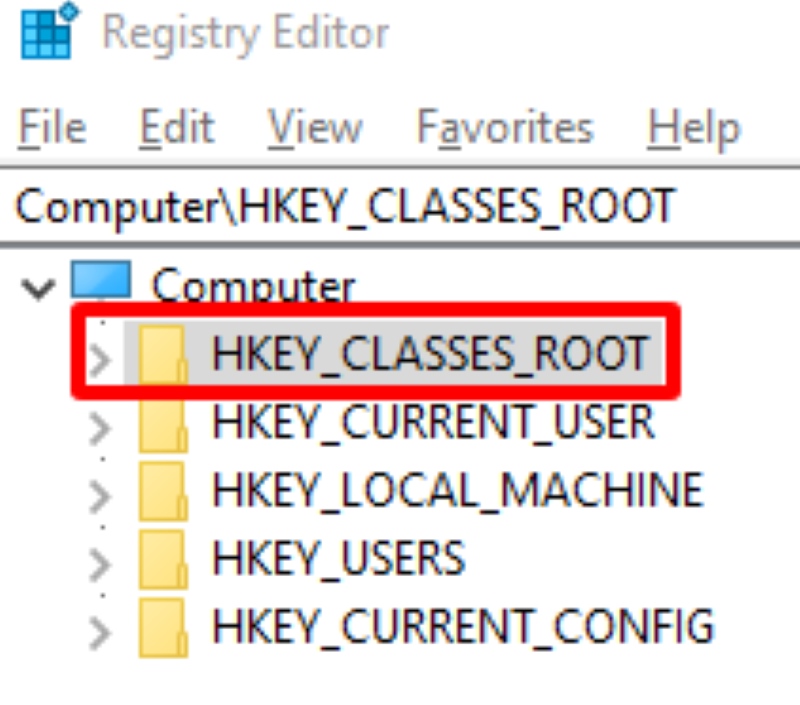
Step 4: Find and open the Local Settings folder.
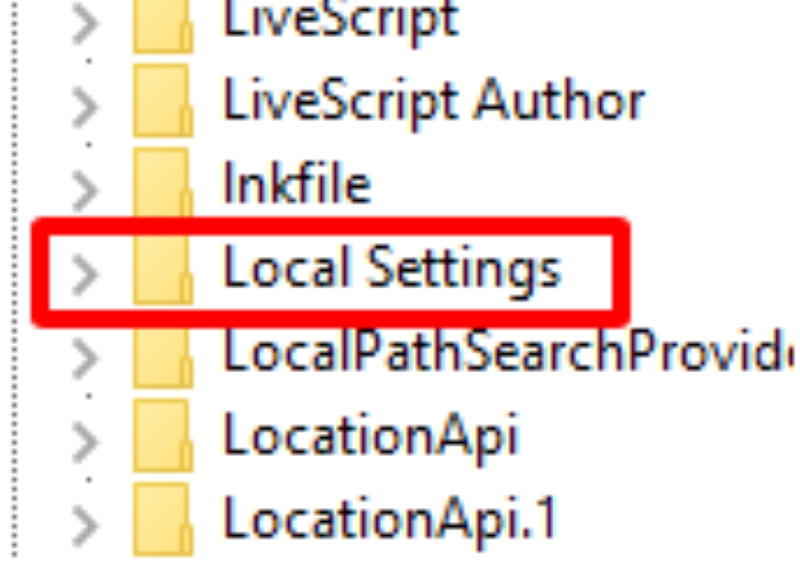
Step 5: Head to the MrtCache folder.
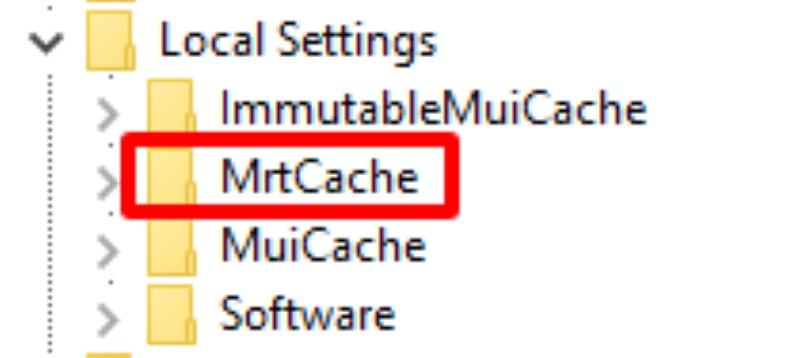
Step 6: Find and open the following folder: “C:%5CWindows%5CSystemResources%5CWindows.UI.SettingsAppThreshold%5CWindows.UI.SettingsAppThreshold.pri”.
You should find it near the bottom of the list. A lot of these folders are named very similarly, so be sure to select the correct one.
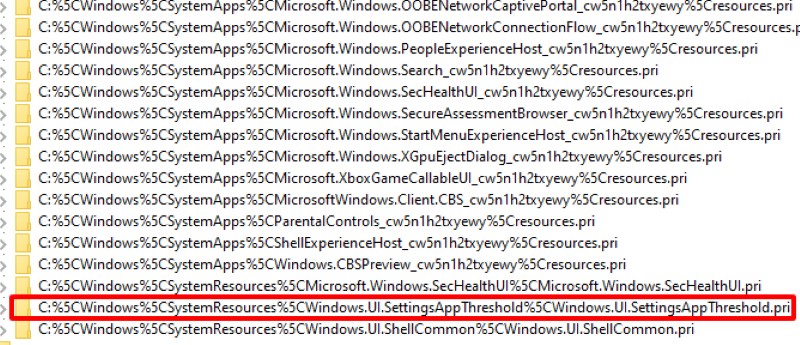
Step 7: Continue opening this file’s subfolders until you reach the final one.

Step 8: Look for and click on this Key Value: @{windows?ms-resource://Windows.UI.SettingsAppThreshold/SearchResources/SystemSettings_Audio_Output_Modern_Properties-3/HighKeywords}. Again, a lot of these Key Values look very similar, so be sure to choose the correct one.
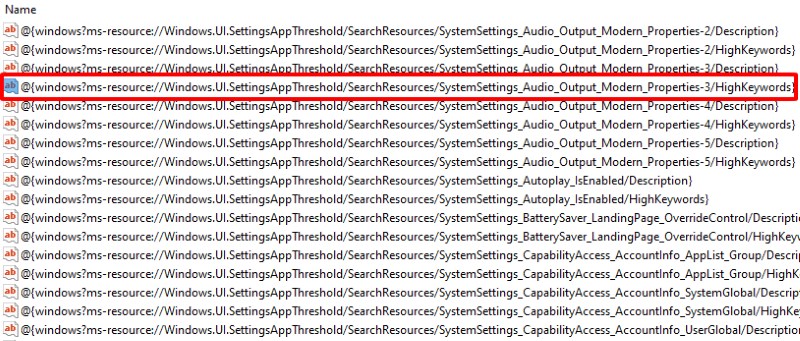
Step 9: Type “spatial audio;spatial format;Dolby Atmos” into the Value data text box and click OK.
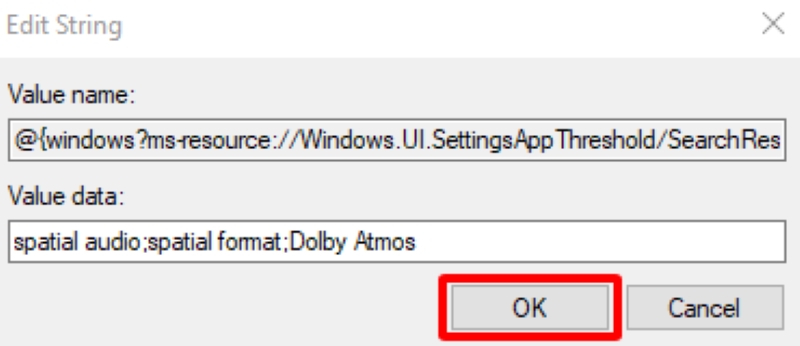
Wrapping Things Up
Your device’s Dolby Atmos Spatial Sound feature makes movies sound amazing, but it can be somewhat finicky and it’s not uncommon for it to suddenly turn off when using certain apps or playing games.
Thankfully, there are several solutions you can try to resolve this issue depending on what kind of device you’re using.
Many smartphones’ Dolby Atmos function only works when the device is connected to headphones, so always ensure you’re headphones are securely connected.
If you do need to change the Default Spatial Sound in the Windows Registry, don’t forget to create a System Restore point before doing so.
What’s your experience with Dolby Atmos frequently turning off? How did you fix this problem on your device?
Let us know in the comments below!
Yesenia Achlim is a technical copywriter and editor with a focus on AV equipment. She aims to break down complicated topics and make technology accessible, no matter your technical expertise. When she’s not teaching you how to replace a projector lamp, you can find her reading and baking.

